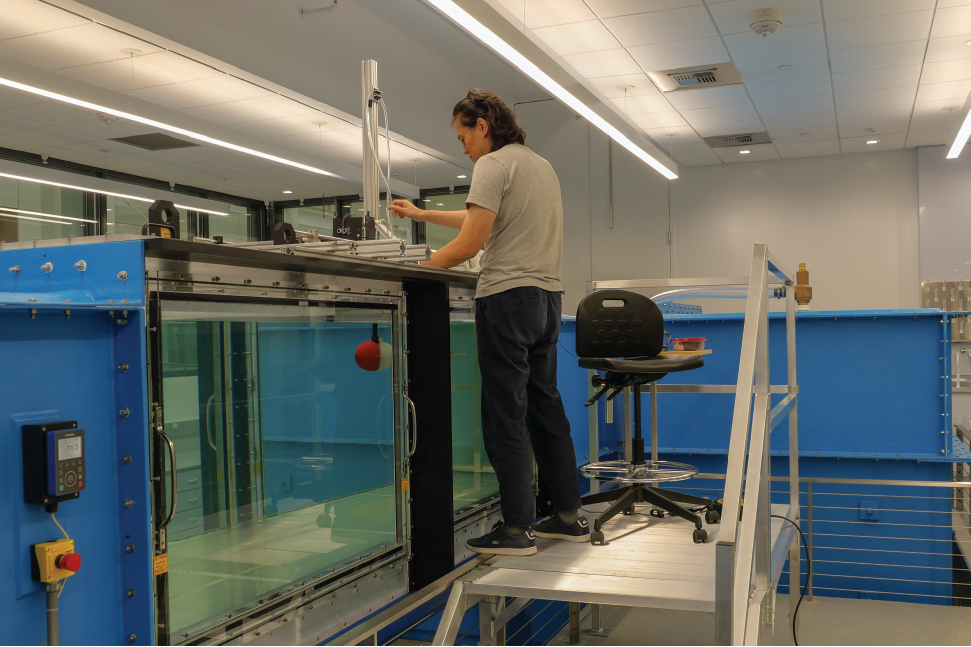
|
 |
MATRIX Lab Visiting Robotics Engineer Dr. Wei-Kuo Yen works with autonomous robotic fish in MATRIX Lab water tunnel |
|
Researchers are taking a page out of nature’s book in order to improve the way their systems move.
As part of a project led by University of Maryland professor Derek Paley and funded by the Office of Naval Research (ONR), MATRIX Lab Visiting Robotics Engineer Dr. Wei-Kuo Yen is figuring out what allows fish to swim in close proximity so efficiently and applying those elements to help robots move in groups more adeptly. According to ONR, identifying and duplicating sensory adaptations of aquatic and amphibious animals will help make Navy systems more agile, stealthy, and efficient.
Dr. Yen is working on replicating the movement of schooling fish with autonomous robotic fish and multimodal sensing interactions. Multimodal sensors detect their environment, just as real fish detect each other via visual and lateral line systems. This allows Yen to control coordinated movement.
The other part of the project focuses on the formation of schools. Forming an inline configuration allows groups of fish or flapping foils to swim more efficiently. Through simulating an array of flapping foils with different kinematic conditions, Yen is able to replicate the proper separation distance between each foil when designing the formation control of his robotic fish. This allows him to determine where to position the robots to allow them to move efficiently.
Ultimately, success would look like a group of robots capable of sensing their surroundings, synchronizing their swimming patterns based on what they detect, and moving in a stable and efficient formation.
“Autonomous underwater vehicles allow us to safely explore dangerous areas, or places that we are currently unable to reach,” Dr. Yen said. “My work could help design coordinated control strategies and passive sensing to help make that happen.”
This research is made possible by UMD’s high-performance computing resources and the MATRIX Lab’s circulated water tunnel, which was used to experiment with different flow variations and movements as well as demonstrate the proposed control strategy.
You can learn more about the program funding the project here: https://www.onr.navy.mil/organization/departments/code-33/division-331/unmanned-surface-vehicle
Related Articles:
MATRIX-Affiliated Faculty Solving Tomorrow's Challenges Today
Developing Efficient Systems for Deep Sea Exploration
“Gambit” Pays Off in UMD Team’s Search-and-Rescue Competition Win
UMD Team Wins Inaugural NIST UAS 3.1: FastFind Challenge
MRC and MAGE Earn ARM Institute Endorsement
New undergraduate minor in robotics and autonomous systems
Paley receives ONR funding for cross-domain cooperative control
History-Making Organ Flight Honored with Industry Award
Navigating the "New Normal": A Role for UAS
UMD Student Team Advances in UAS Competition
August 27, 2024
|

